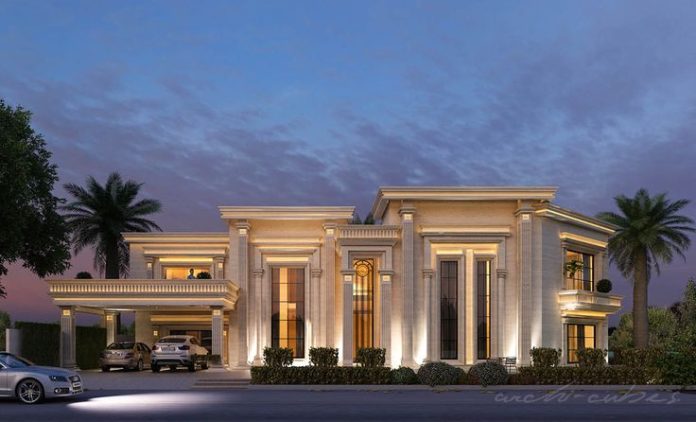If you’re ever in the mood for a UNESCO World Heritage Site that oozes with culture and history, look no further than Lahore. With centuries of architecture to explore, there’s no shortage of things to do in this ancient city. But if you want to get a glimpse of the city’s past, look no further than its iconic architecture. From the Lahore Fort to the Walled City of Lahore, these structures are some of Pakistan’s most recognizable landmarks. In this blog post, we will introduce you to some of Lahore architects and help you learn about their incredible contributions to Pakistani culture.
Lahore: A Brief History
Lahore, once known as the “City of Gardens”, is one of Pakistan’s most culturally rich and historically significant cities. It is also home to some of the country’s most celebrated architects, including Abdul Karim Khan, Feroze Shah Mehmood, and Le Corbusier.
The city’s origins date back to the Middle Ages when it was founded by Sultan Sikandar Lodi in 1523. It rose to prominence during the Mughal Empire when it served as the capital of Hindustan. After India’s independence in 1947, Lahore became part of Pakistan and has since been a major hub for trade and commerce.
Today, Lahore is a bustling metropolis with a population of over fifteen million people. It is home to an array of cultural attractions, including several UNESCO World Heritage Sites. The city is also well-known for its food and, which has contributed significantly to its economy.
Lahore’s Architecture
Lahore has a rich architectural history that is unparalleled in Pakistan. The city was founded in the early 1600s by Mughal Emperor Babur, and since its inception, it has been home to some of the country’s most renowned architects.
One such architect is Sir Syed Ahmed Khan, who is considered to be the father of modern architecture in Pakistan. Khan developed a unique style of building which blended Islamic and European design elements. His most famous work is the Badshahi Mosque in Lahore, which is considered to be one of the finest Islamic mosques in the world.
Other prominent architects from Lahore include Jamshed Nusserwanjee and Wazir Akbar Shah. Nusserwanjee is known for his iconic theatres and public buildings, while Shah was responsible for some of Lahore’s most iconic landmarks, including the Shalimar Gardens and Empress Market.
Today, Lahore remains one of Pakistan’s most vibrant and cosmopolitan cities, with a wealth of architectural treasures waiting to be discovered. Whether you are a fan of traditional Islamic architecture or prefer modern designs, there is something sure to appeal to you in Lahore’s astonishing array of buildings
Famous Architects from Lahore
Lahore is home to some of the most renowned architects in the world. From Hasan Ali Khan, who designed the iconic Quaid-e-Azam University, to Abdul Sattar Edhi, who created one of Pakistan’s largest humanitarian networks, these men have left a lasting impression on this city and its architecture. Here are five famous Lahore architects you should know:
1. Hasan Ali Khan
Hasan Ali Khan was a pioneer of modern Pakistani architecture and is widely considered to be one of the country’s most important architects. He designed the iconic Quaid-e-Azam University in Lahore and many other noteworthy buildings throughout the city.
2. Abdul Sattar Edhi
Abdul Sattar Edhi is perhaps Pakistan’s most famous architect and humanitarian. He founded the Edhi Foundation, which provides assistance to thousands of needy people across the country. His work has earned him countless awards and honors, including the Nobel Peace Prize.
3. Mian ul Haq Nawaz Sharif
Mian ul Haq Nawaz Sharif is a well-known architect in Lahore who has worked on several landmark projects in his career, including the Punjab Cricket Association Stadium and Minar-e-Pakistan Monument.
4. Muhammad Farooq Zahid Hussaini
Muhammad Farooq Zahid Hussaini is an architect known for his structurally innovative designs. He has worked on many notable projects in Lahore,
Future of Lahore’s Architecture
With Lahore witnessing a rapid expansion and development in the past few years, it is no wonder that the city’s architecture has taken on a fresh look. With new buildings and structures popping up everywhere, Lahore’s architecture future looks promising and exciting. Here are some of the most anticipated projects for Lahore’s architecture in the coming years:
1. The Minar-e-Pakistan: After almost three decades of planning and construction, this gigantic memorial has finally reached its final form. Standing at a colossal 168 meters tall, the Minar-e-Pakistan is an impressive sight to behold. Designed by American architect Charles Moore, it will be a powerful symbol of patriotism and unity for all Pakistanis. Estimated to cost over US$100 million, completion is expected in 2020.
2. The Pearl Continental Plaza: Designed by Pakistani architects Anwar Sadat Khan Sherwani and Wajid Ali Khan, this ambitious project aims to revitalize Lahore’s aging central district with a mix of modern and traditional architecture. Comprising over 1 million square feet of space, it will be home to luxury hotels, offices, retail outlets, public spaces and more. Earning praise for its unique design concept and striking appearance, completion is slated for 2019.
3. The Skyline Towers: Another ambitious project by Pakistani architects Anwar Sadat Khan Sherwani and Wajid Ali Khan, this high-rise residential complex features
Conclusion
It is no secret that Lahore, Pakistan has a rich architectural heritage. From its ancient Mughal era mosques and mansions to the colonial British-era buildings, this city is home to some of the most iconic structures in all of South Asia. In this article, we provide a look at five of the most iconic Lahore architects and why their work is so admired. From Feroz Khan Noon to Achmad Khatibuddin Shalhoob, take a close look at these brilliant minds and see how their innovative designs have shaped modern day Lahore.
Apart from that, if you are interested to know about How Enterprise Architecture Can Benefit Your Business then visit our Business category.











